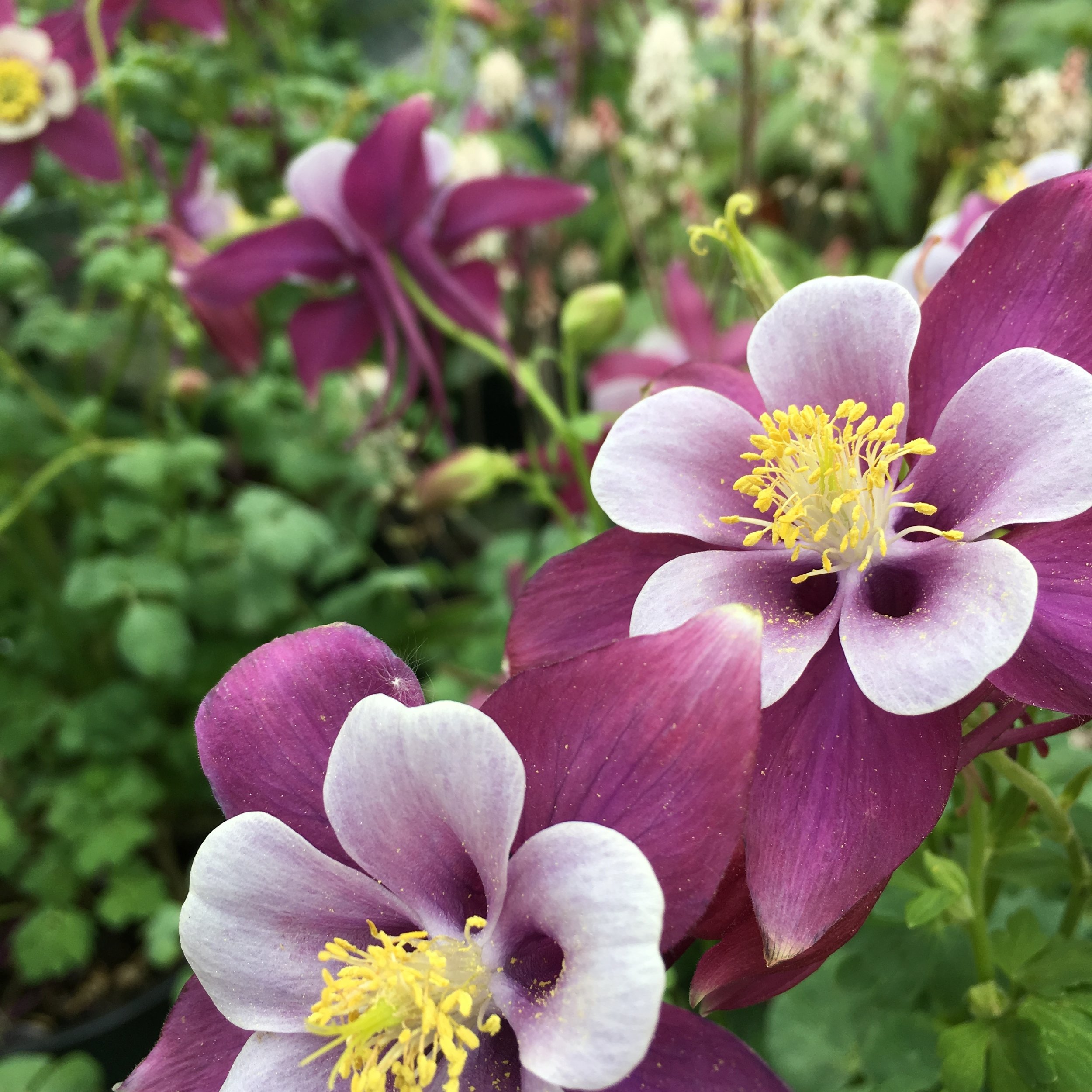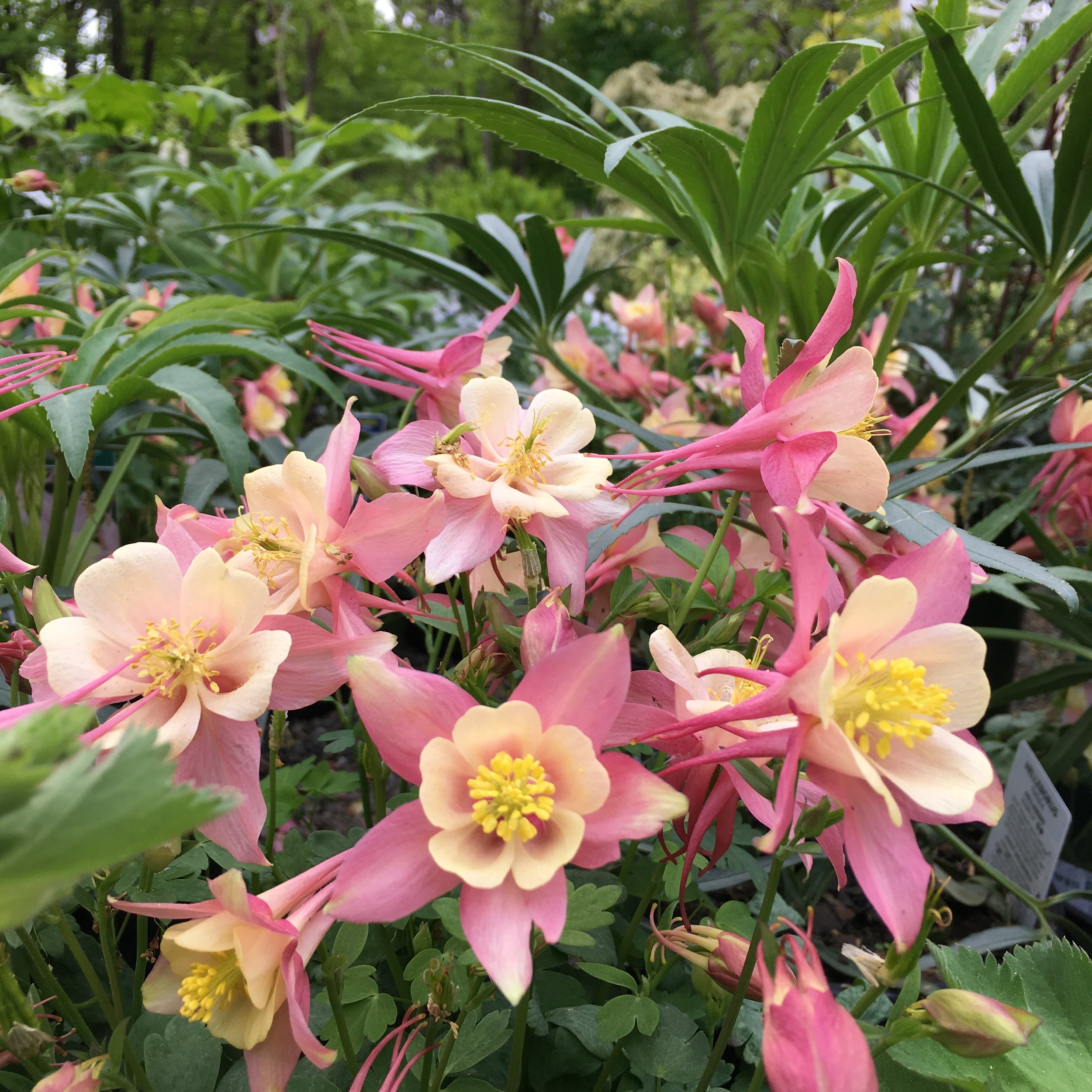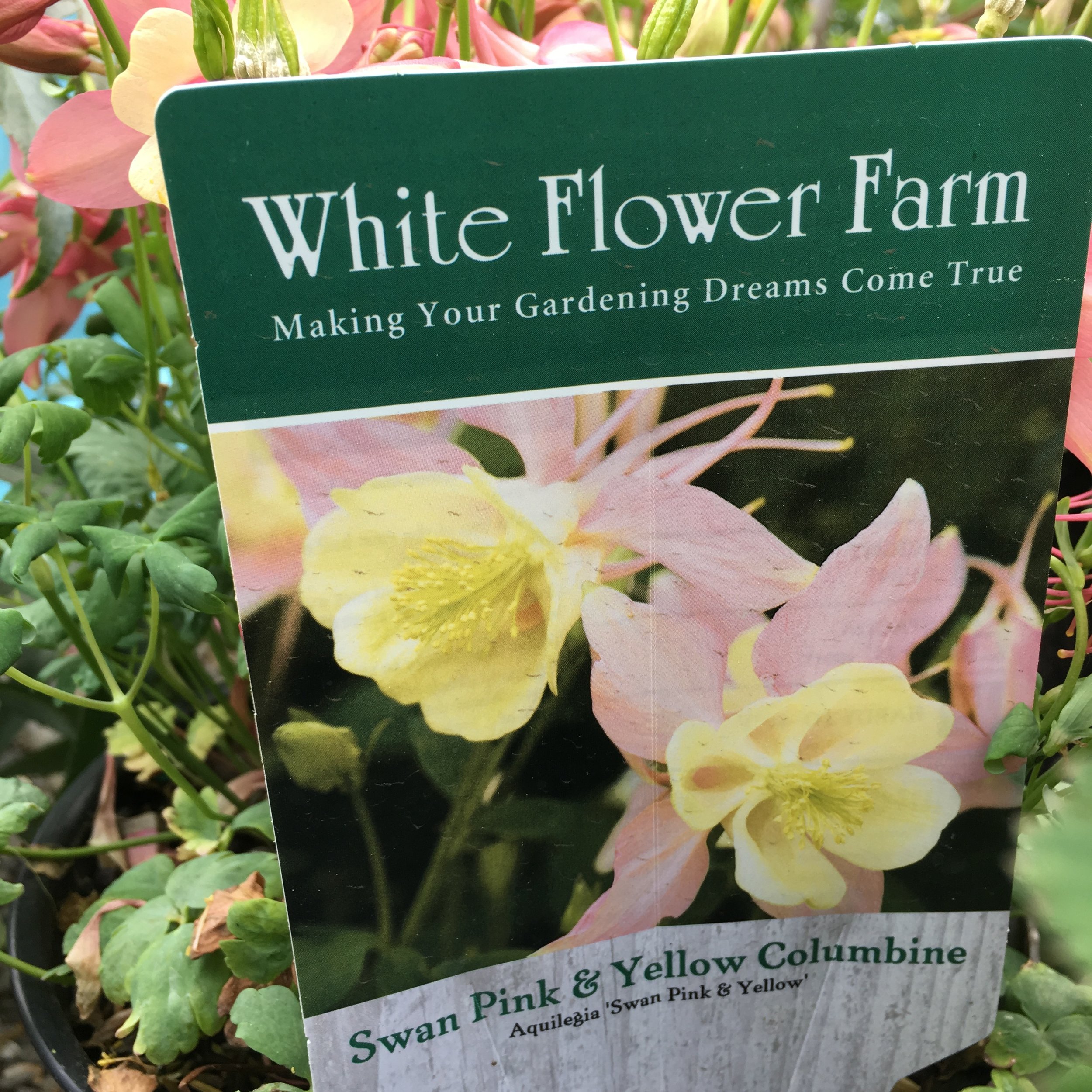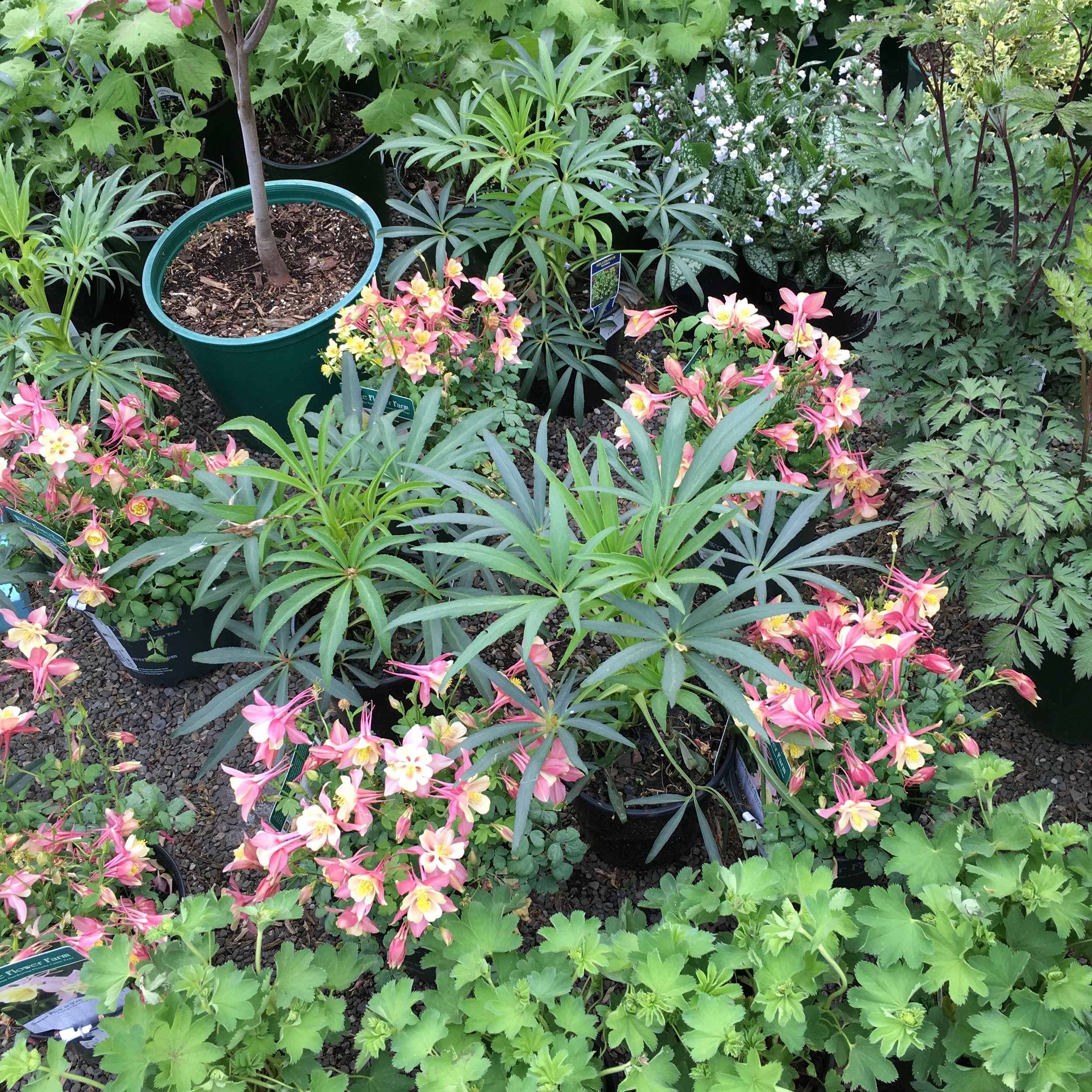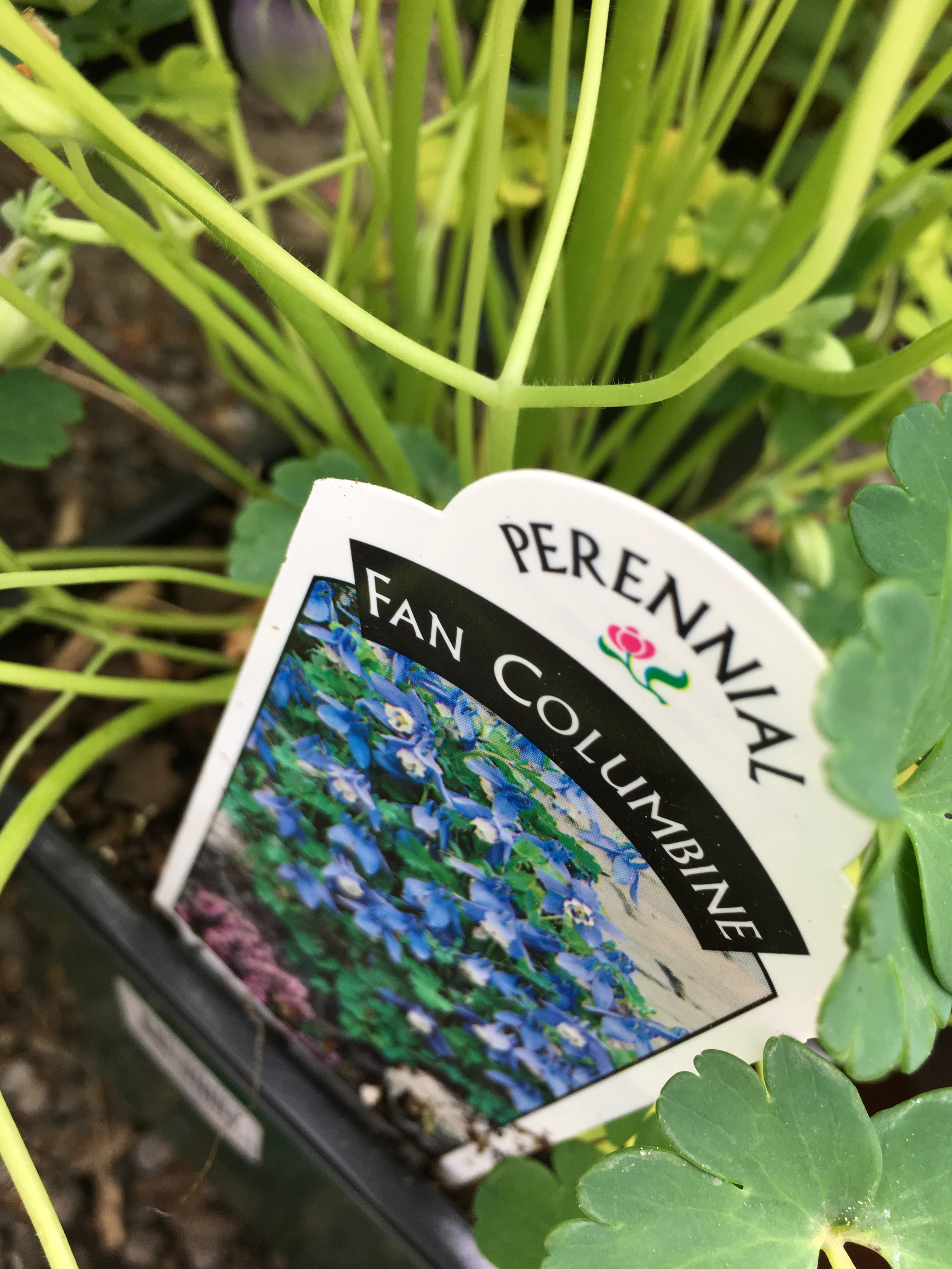Our favorite Columbines – spring blooms
/Lacy and graceful, Columbine are a lovely spring bloom.
Deer resistant, sun and shade tolerant, and–with a little help from you–columbines will naturalize. (More on that later.) Here are a few of our favorites.
#1. Aquilegia vulgaris plena ‘Black Barrow’
The deep purple (almost black) color of the bell shaped flowers are an elegant addition to any shade garden.
#2. Aquilegia canadensis ‘Corbett’ is a variety of wild columbine.
Humming birds, bees, and butterflies love the nectar rich wild columbines.
#3. Aquilegia vulgaris ‘Clementine Salmon Rose’
New varieties of columbine appear all the time because of the cross-pollination caused by natural pollinators. Plant a few varieties and see if any hybrids bloom in your yard!
#4. Aquilegia vulgaris ‘Clementine Blue’
Columbines of all varieties do best in moist spring soil, followed by drier summer soil. If planted in a swampy or often flooded area, crown rot can kill the plant.
The delicate foliage can occasionally develop powdery mildew. If this happens, cut your columbine down to the ground. If it persists, think about relocating them to a an area with more air flow.
#5. Aquilegia canadensis ‘Little Lanterns’
Red wild columbines have twice the amount of sugar in their nectar than other columbine species native to North America and ornithologists have noted that the ruby-throated humming birds follow the blossoming of Aquilegia canadensis as they travel north.
Later in the season finches will eat the columbine seeds, but–if you want to naturalize columbine through out your property–don’t let the seeds go to the birds!
Let the seeds dry on the plant. When they rattle collect the seeds and check the Weather Channel. Right before a thunderstorm, sprinkle the seeds everywhere you’d like them to be, and next spring you will be rewarded with glorious volunteers.
One final note: Columbines die back after flowering, so be sure to mix them in with summer blooming perennials, wildflowers and grasses.


